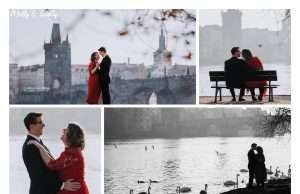The Franz Kafka Museum opened in the summer of 2005 in the remarkable Herget Brickworks building on the Lesser-Town bank of the Vltava River.
Franz Kafka was born in Prague on 3 July 1883, died in a sanatorium in Kierling on 3 June 1924, and was buried in the New Jewish Cemetery in Prague –
KAFKA IN PRAGUE Existential Space
The first stage of our immersion into Kafka’s world presents the way Prague shaped the author’s life, the mark it left on him and how its transformative power affected him. His diaries and extensive correspondence with family members, friends, lovers and publishers bear witness to this influence.
Quite often we can observe attempts to prove that Kafka’s fictional works take place in Prague. It is generally understood that the anonymous cathedral in The Trial is none other than St. Vitus Cathedral; that the path taken by Joseph K. in the last chapter of the same book goes from the Old Town, across Charles Bridge to the outer limits of the Lesser Town. It is also said that the view from Bendemann’s window in The Judgment features the embankment, the Vltava River and its opposite bank in the same manner as it can be seen from the Mikulášská Street (today’s Pařížská Street), where Kafka’s family lived in 1912. Efforts have been made to prove that Prague’s topography is ever present despite going unnamed.
Entrance Fee
Adult: CZK 240
Reduced price for students, seniors and disabled persons: CZK 160
Family Ticket (2 Adults, 2 Children): CZK 620
We recommend you to book a visit with our professional guide (at least 7 days in advance). Our guided tours are available in following languages: Czech, English, German, French, Russian.
Guided tour prices: entrance fee + CZK 800











The Kafka Museum in Prague is a museum dedicated to the life and work of the Czech-born writer Franz Kafka. It is located in the center of Prague, in a beautiful Art Nouveau building that was once the home of Kafka’s sister, Ottla.
The Kafka Museum is a small but highly immersive museum, with interactive exhibits and multimedia displays that help visitors understand Kafka’s life and work. The museum’s exhibits are organized chronologically and cover various aspects of Kafka’s life, including his family and social circles, his work as a writer, and his relationships with the city of Prague.